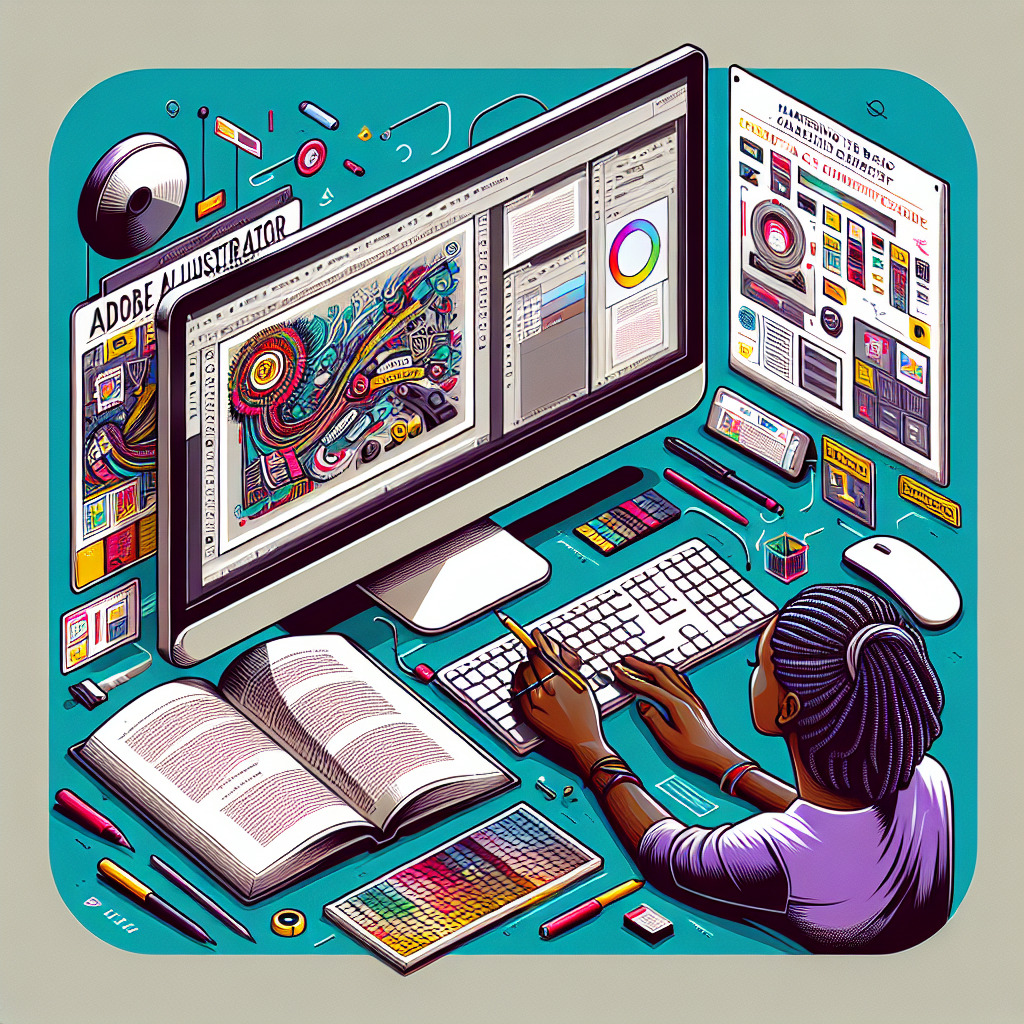Adobe Illustrator is an incredibly powerful design software. Leveraged by numerous professionals worldwide, this tool facilitates creating graphics, logos, cartoons, and more. Mastering Adobe Illustrator is not an overnight journey. This guide serves as an introduction to the basics of Adobe Illustrator, helping you understand the ins and outs of this versatile software.
Understanding Adobe Illustrator
Before diving into its functionalities, it’s crucial to understand what Adobe Illustrator is. Adobe Illustrator is a vector graphics editor developed and marketed by Adobe Inc. Its primary advantage is working with vector graphics, enabling developers to create designs that remain crisp and clear at any resolution.
The Workspace
The workspace includes various tools, panels, and controls to work with. The ‘Tools’ panel contains the tools used for creating and editing images, artwork, page elements, etc. The ‘Control’ panel displays options for the currently active tool or selection. The ‘Artboard’ is the area where you create your work. Adobe Illustrator allows having multiple artboards, which is perfect for working on multiple designs simultaneously.
Essential Tools
The essential tools you need to master in Adobe Illustrator are:
- Selection Tool: Enables selection and movement of objects.
- Direct Selection Tool: Allows for the selection and modification of anchor points and paths.
- Pen Tool: Provides options for drawing straight and curved lines, thus shaping paths.
- Shape Tools: Illustrates basic shapes like rectangles, circles, and polygons.
- Text Tools: Include creating, editing, and formatting text.
- Color Tools: Offer options to put color into your creations for that added touch.
Layers
Layers are a substantial part of working with Adobe Illustrator. They help manage various parts of your artwork. By using layers, you can create, edit, lock, and stack layers, change the order of images, etc. Mastering layers gives you greater control and organization of your designs.
Paths
Paths are the invisible lines that join anchor points. There are three types of paths: straight, curved, and closed. Understanding paths and how to control them is vital as they form the basis of creating illustrations and graphics in Adobe Illustrator.
Conclusion
Mastering the basics of Adobe Illustrator can open up a world of creative opportunities. While learning any new software can be challenging, with consistent practice and the right guidance, you can efficiently harness the powers of Adobe Illustrator to articulate your design ideas. Above all, keep exploring and experimenting as that’s how you genuinely learn and grow in your craft.
Frequently Asked Questions
- Is Adobe Illustrator suitable for beginners?
Yes, Adobe Illustrator is designed to accommodate different users, making it suitable for both beginners and experienced professionals.
- What is Adobe Illustrator best used for?
Adobe Illustrator is a vector graphics software best used for creating digital graphics, illustrations, and typography for all kinds of media.
- Can I use Adobe Illustrator for free?
Adobe Illustrator is a premium software. However, Adobe offers a free trial for new users, after which you have to pay for continued use.
- How long does it take to learn Adobe Illustrator?
The time to learn Adobe Illustrator varies depending on an individual’s dedication and previous experience with similar software. Roughly, a couple of months of regular practice should suffice for getting comfortable with the basics.
- Is Adobe Illustrator better than Photoshop?
Both Illustrator and Photoshop have different uses. Illustrator specializes in graphic design and typography, while Photoshop is tailored for photo editing and digital painting. Each has its strengths and is better or best suited for specific tasks.

